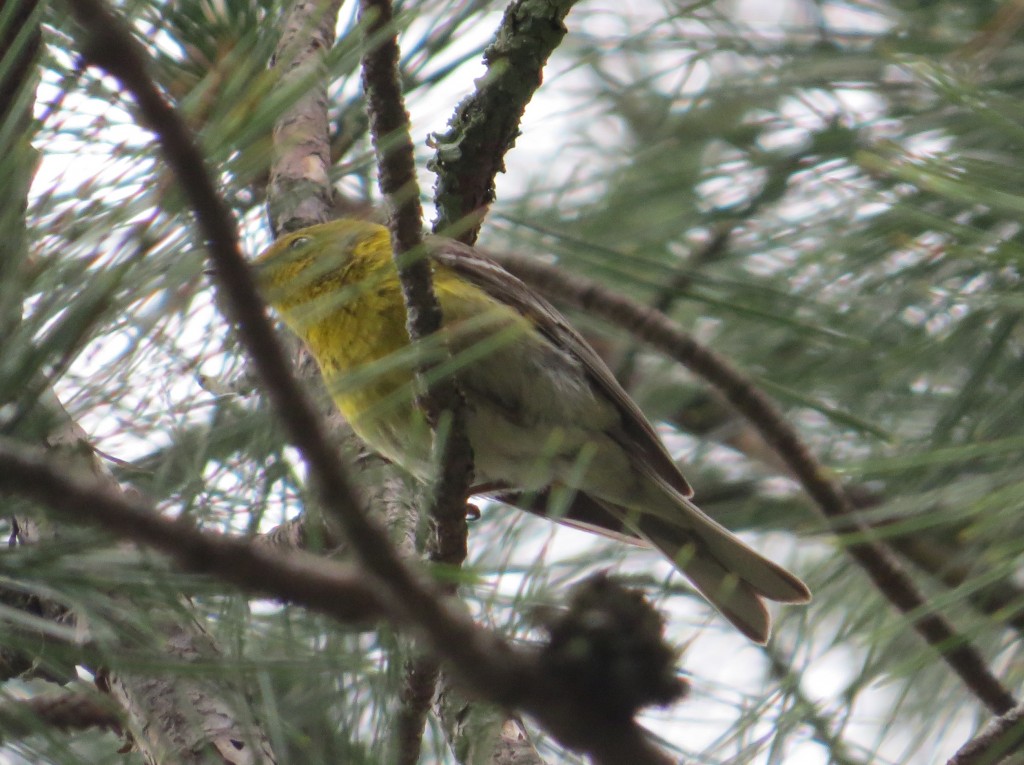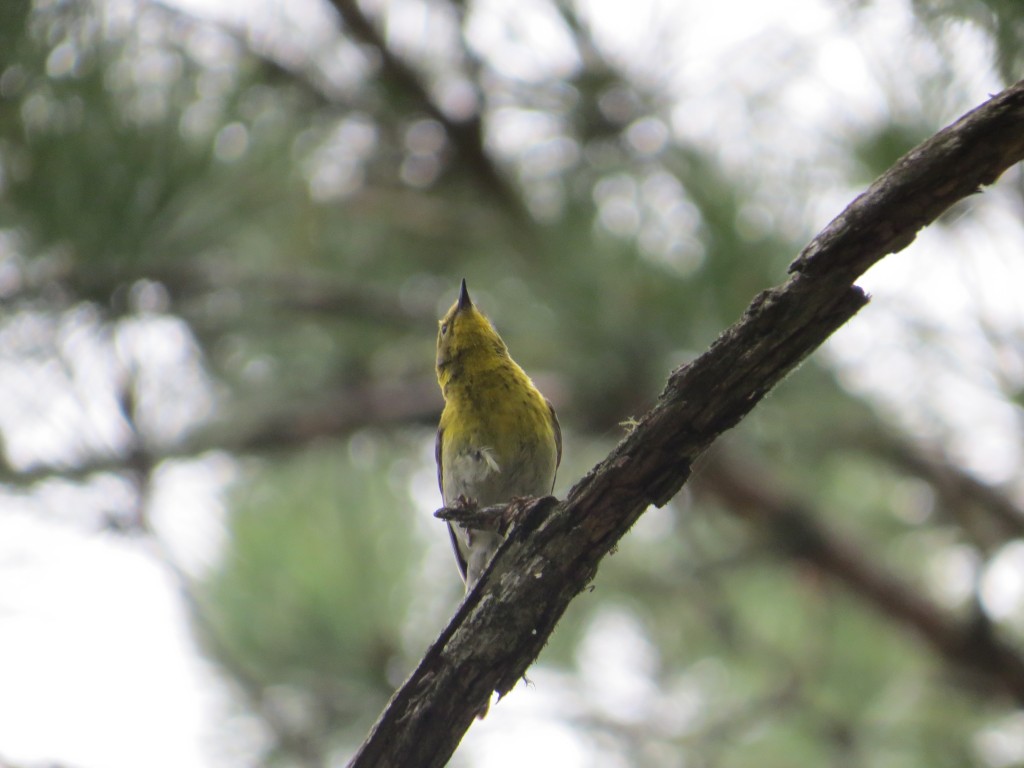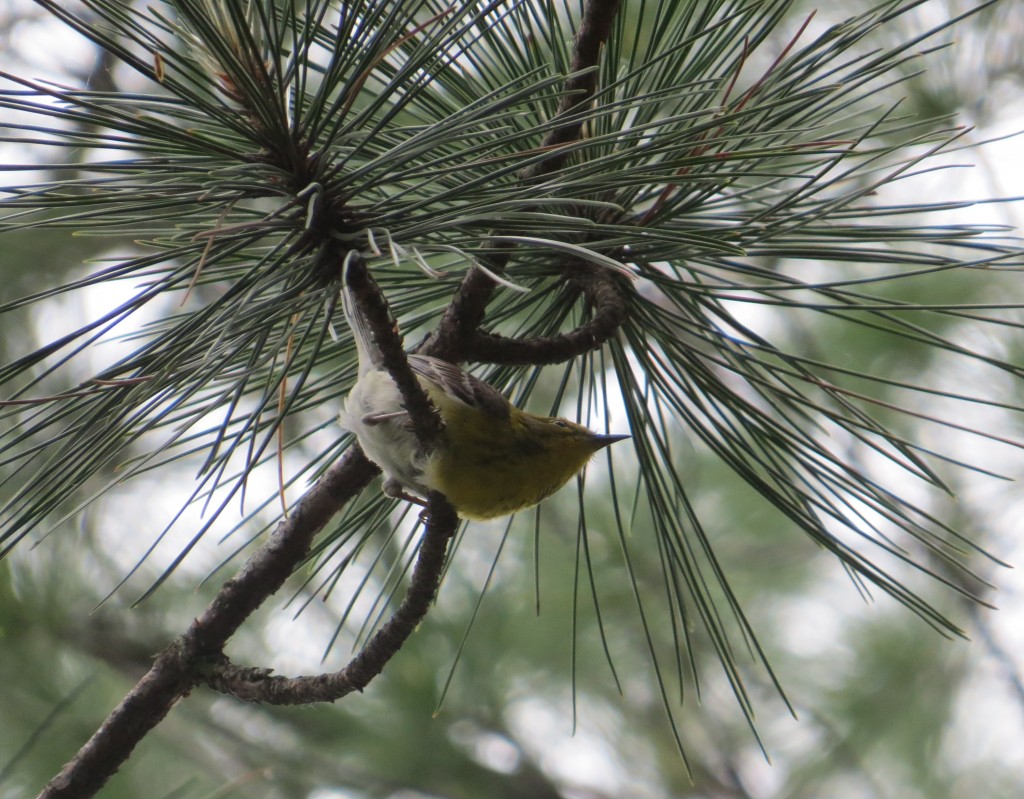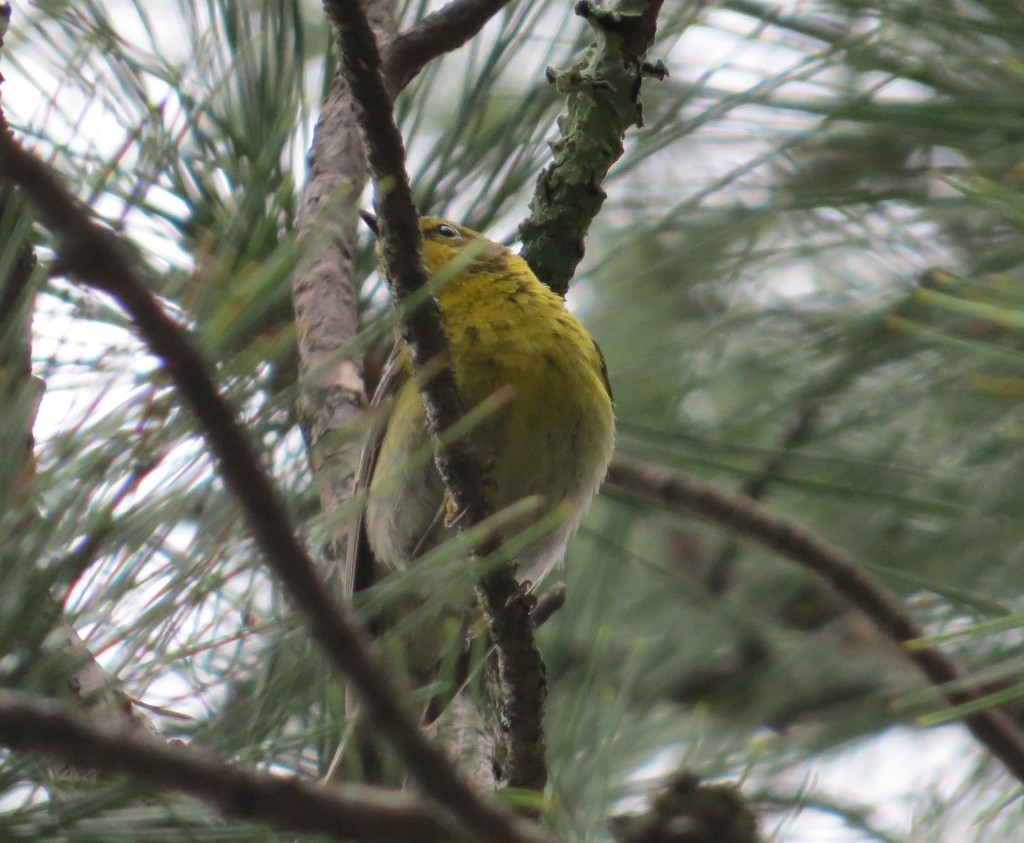Gone are the days of spring migration when the Warbler blitzkrieg causes hordes of Warblers of nearly 30 species to descend on our little patches of woods, putting us birders on the defensive as we scramble to see them all before the invasion is over. Chasing a specific Warbler sighting during migration is a fool’s game of which this fool has partaken way too often only to crash and burn. Now in summer, though, it is the time for the offensive Warblering, the deliberate Warblering, the better Warblering–IF you are in the right location. And that I was when I was vacationing on Wisconsin’s Madeline Island in Lake Superior. Close to 20 species of Warblers call the northwoods of northern Wisconsin and Minnesota home. Seeing Warblers on their breeding territories is the best way to see Warblers in my opinion. You get the full Warbler experience – their incredible looks, their robust songs, and their species-specific habitats. With migrants and vagrants you are often getting just 1/3 of the true Warbler experience. It is inferior Warblering to be sure. The Warblering on Madeline was far from inferior and provided this birder much entertainment. So let’s get to it.
Starting off this parade of Warblers will be my spark bird, the bird that caused me step foot on this slippery slope of birding: the Chestnut-sided Warbler. I was very pleased to, pleased to meet him too.
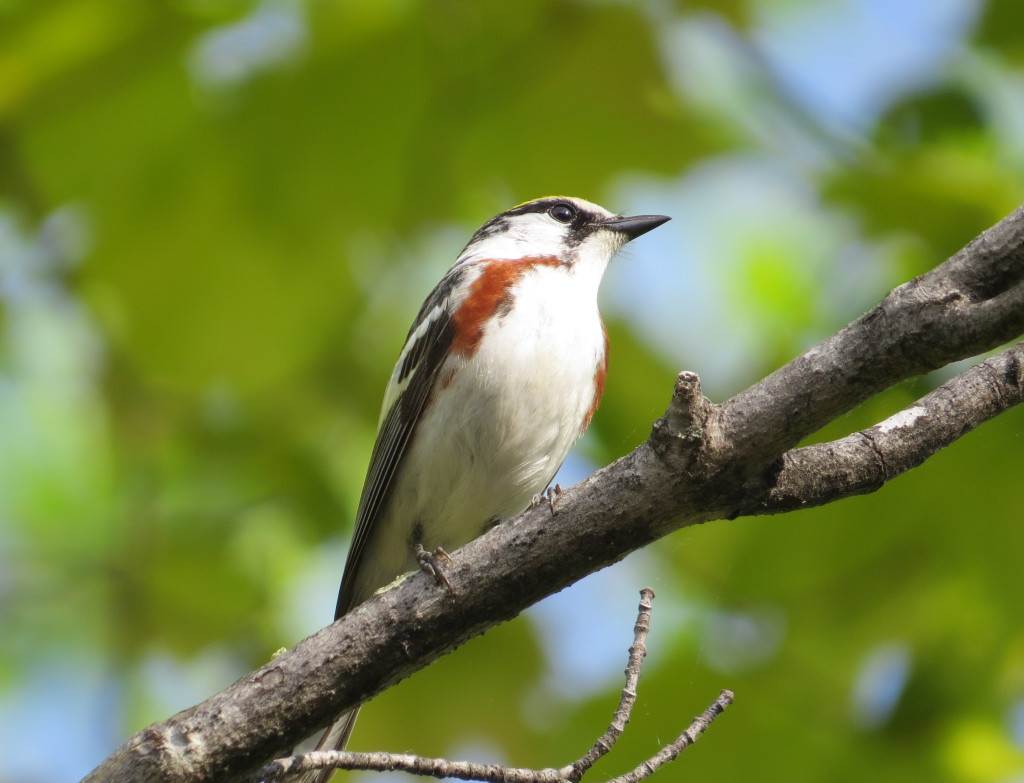
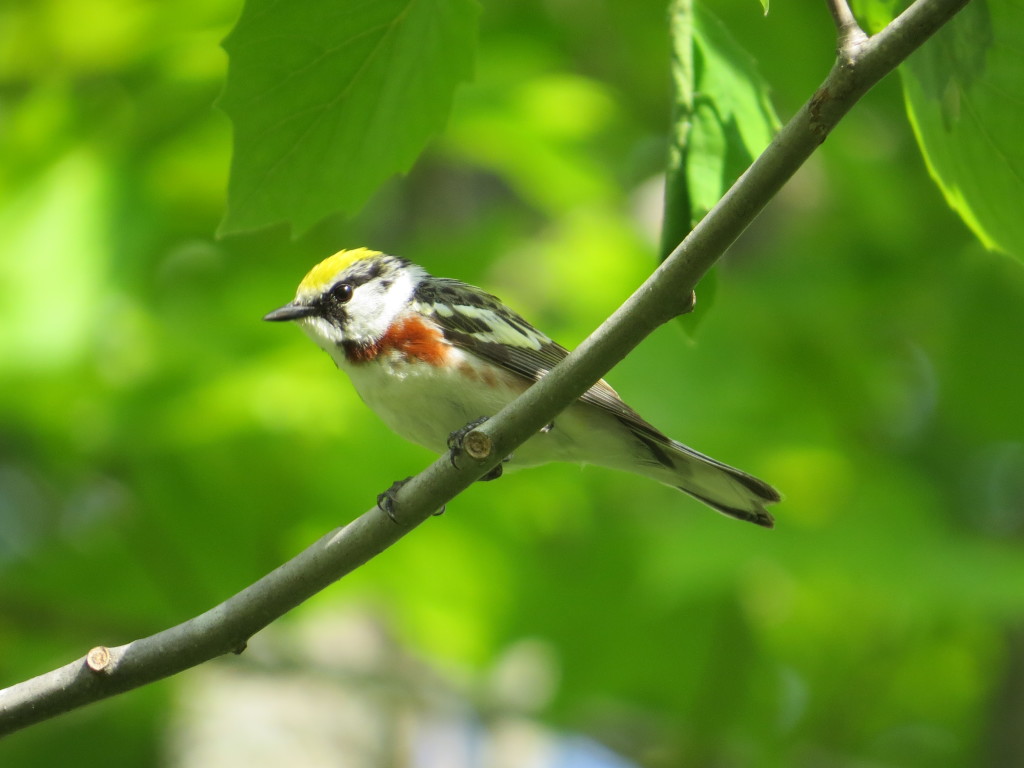
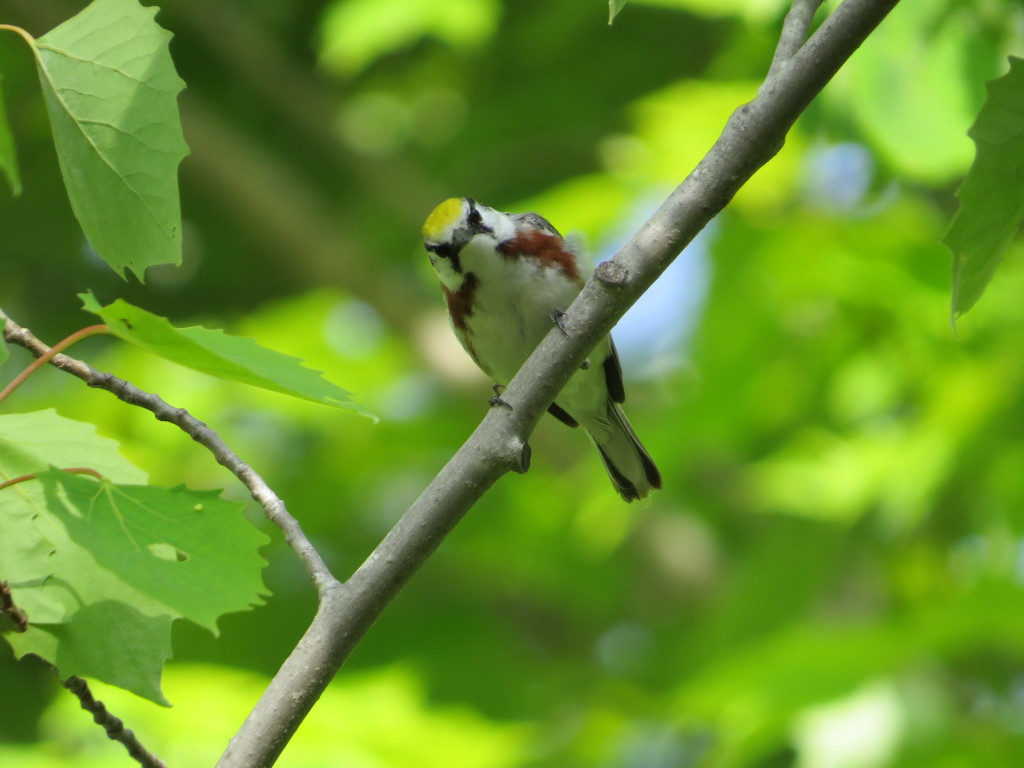
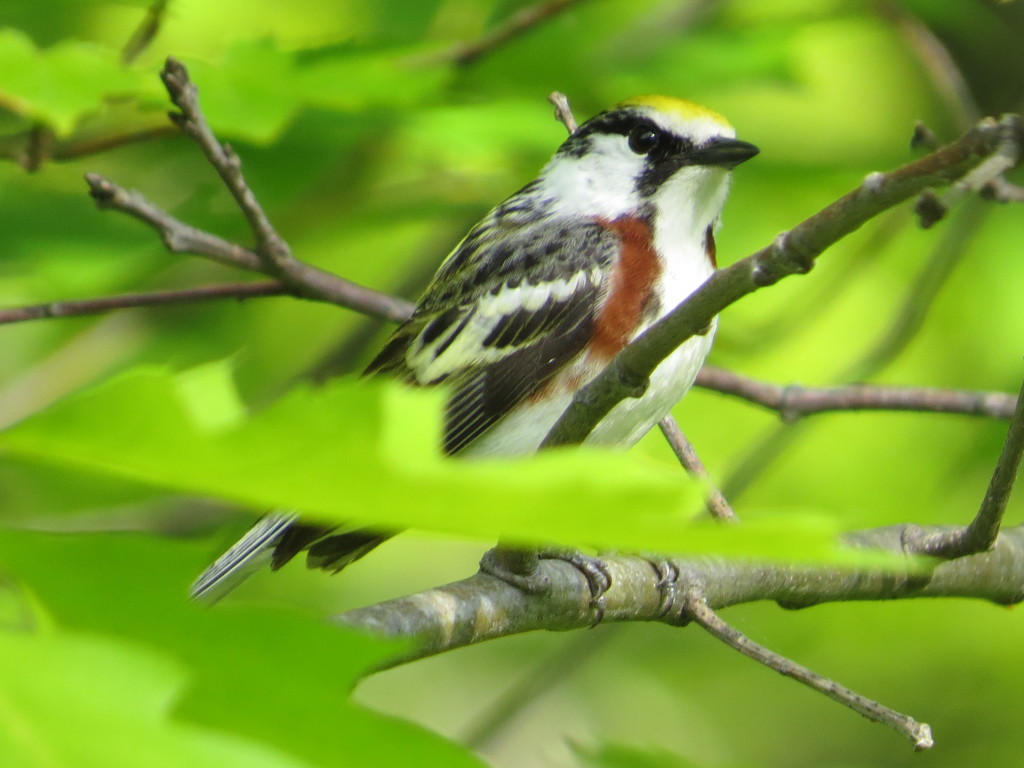
I also took my annual Yellowthroat shot on this trip. It fits in a mega Warbler post but rarely anywhere else.
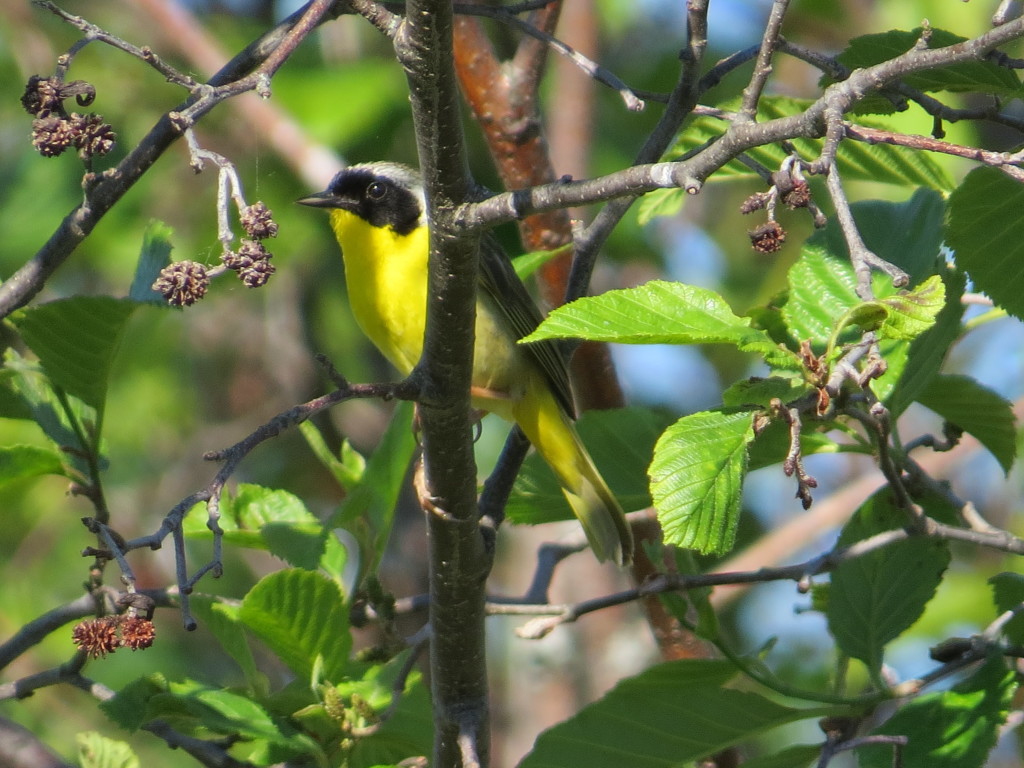
In my exploration of Madeline Island, I found a “habitat island” of Red Pines along the beach at Big Bay Town Park and Big Bay State Park. Most of island is mixed deciduous forest. I wanted to check out the pines in the hopes of finding Pine Warblers or lifer Red Crossbills. I was successful with the former as this patch of woods held several of those drab but likeable Pine Warblers. This thin strip of pines with Lake Superior on one side and a lagoon on the other has a great boardwalk running the length of this point which is over a couple miles long.
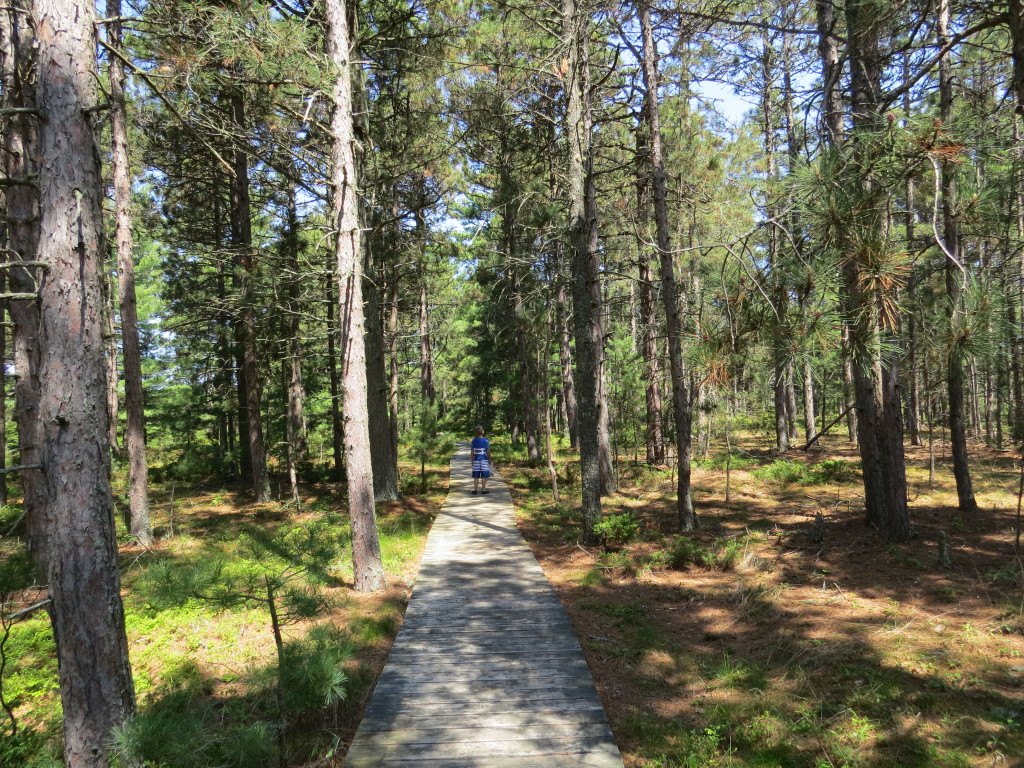 Kudos to Big Bay Town Park and Big Bay State Park for this awesome boardwalk and kudos to the PIWA for having the best habitat preference of all the northwoods Warblers.
Kudos to Big Bay Town Park and Big Bay State Park for this awesome boardwalk and kudos to the PIWA for having the best habitat preference of all the northwoods Warblers.
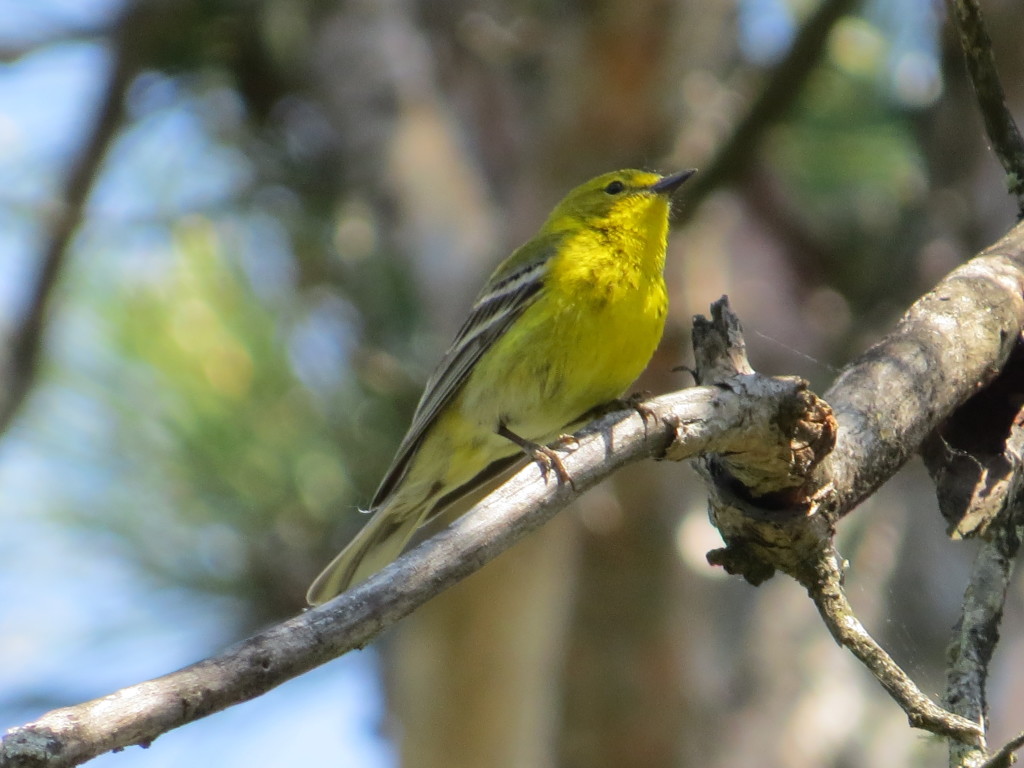
This bird was a lifer as recently as a year ago. I do not take my PIWA sightings for granted. Their trill is similar to a Chipping Sparrow’s, but much richer and more musical.
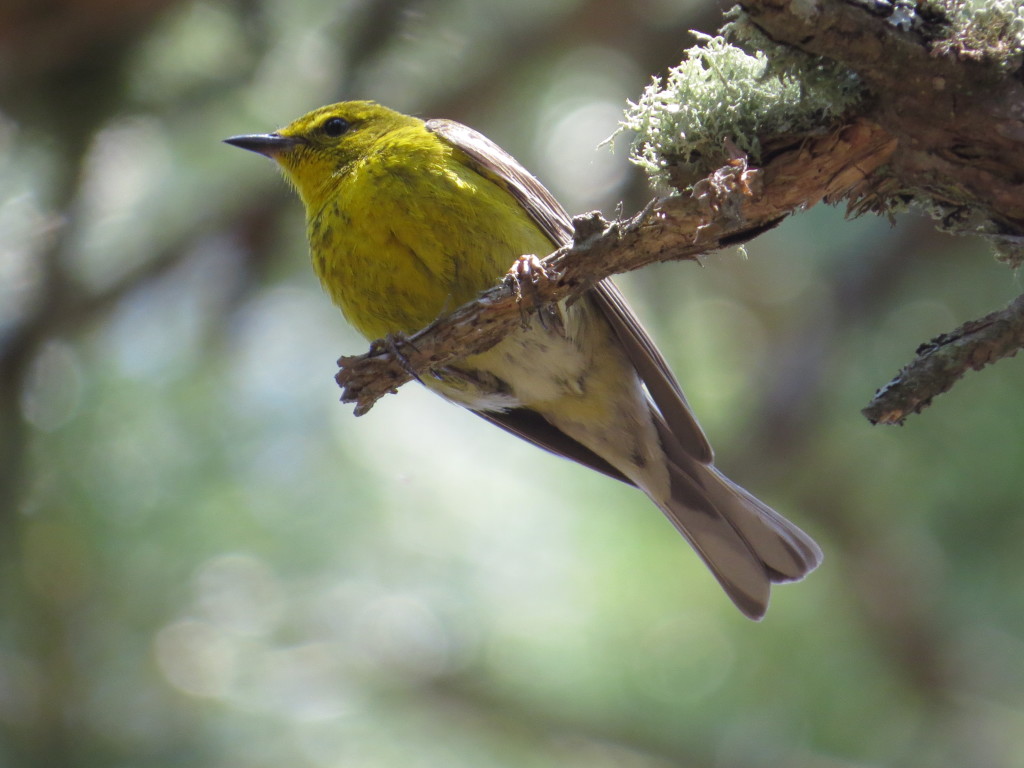
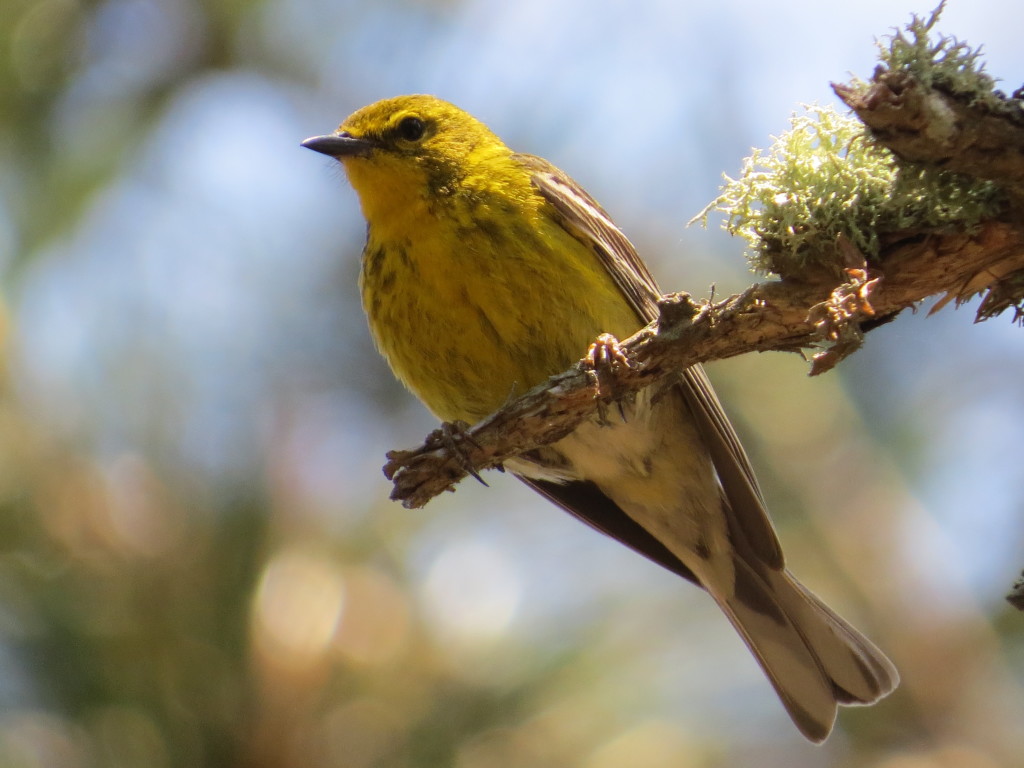
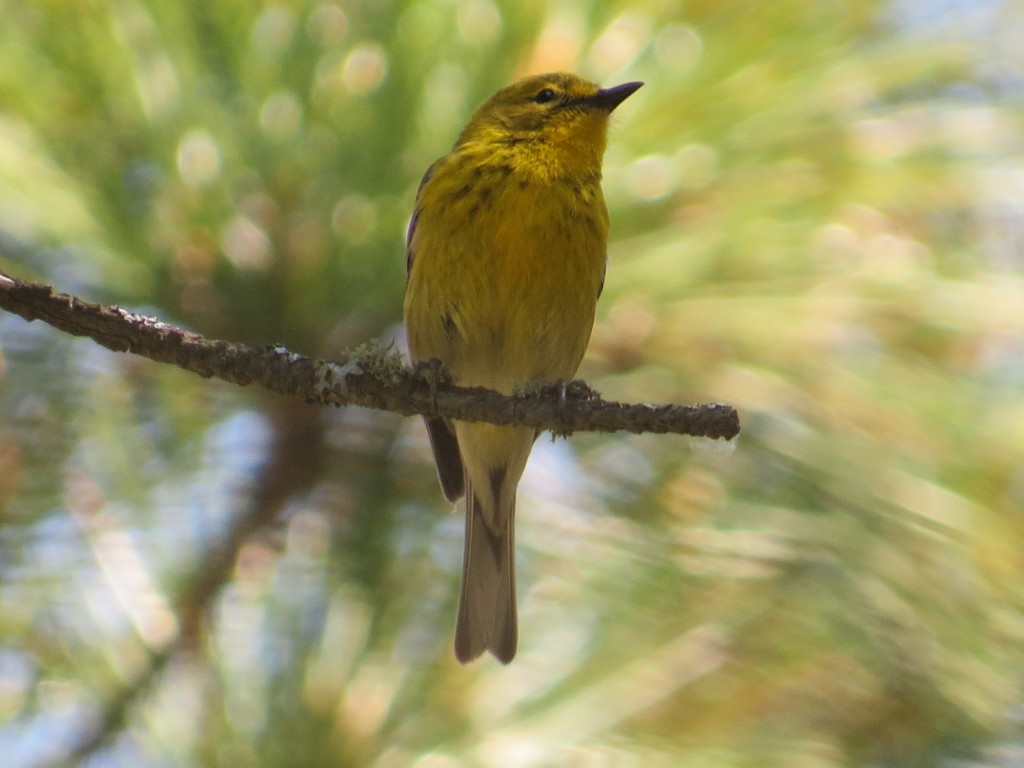
Another Warbler I’m quite fond of is the Black-throated Green which was the second-most common Warbler on the island behind Ovenbird. Despite the many “Teacher! Teacher! Teacher!” calls of the 30+ OVENs I heard one morning, I didn’t pay them any mind. It is summer after all, and this teacher was off duty. The Black-throated Green was a much better bird to watch anyhow.
I really like this Warbler. Perhaps this is because it was once an actual target bird a couple years ago. In 2013, we were inundated with them on a camping trip to Temperance River State Park along the north shore of Lake Superior. I have fond memories of my kids imitating their catchy, buzzy song. To whom such things matter, the Madeline Island Black-throated Greens who sang zee-zee-zee-zoo-ZEE outnumbered those who sang zoo-zee-zoo-zoo-ZEE by a ratio of 8 to 1. It was a bit of a letdown as I prefer the latter version.
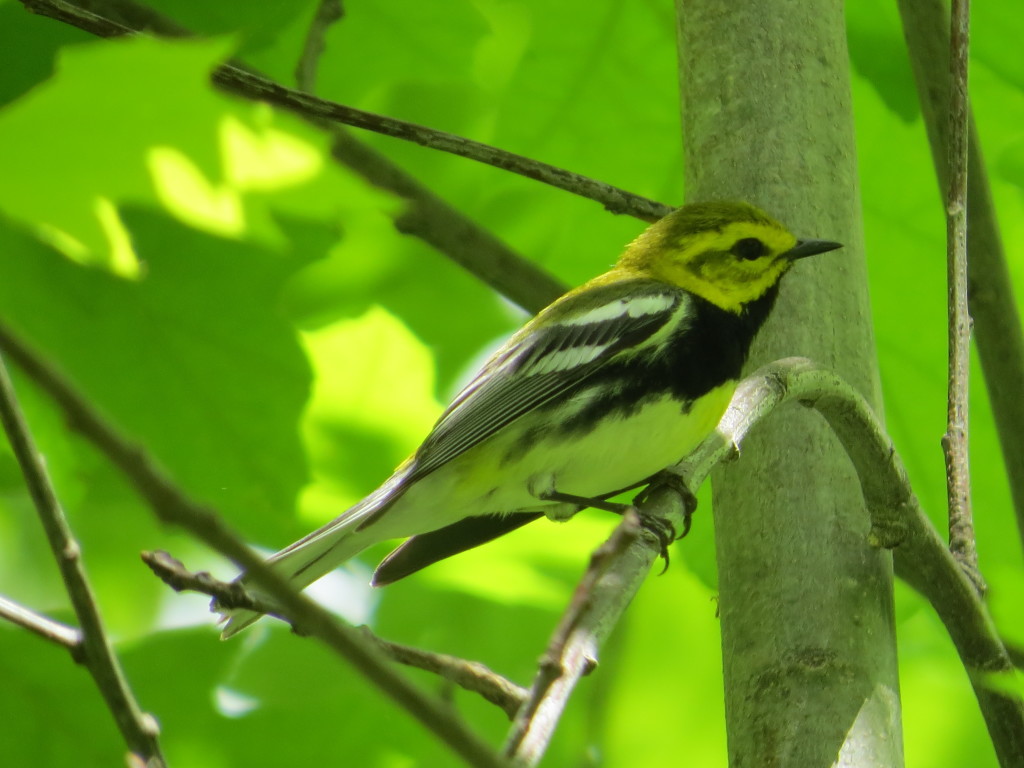
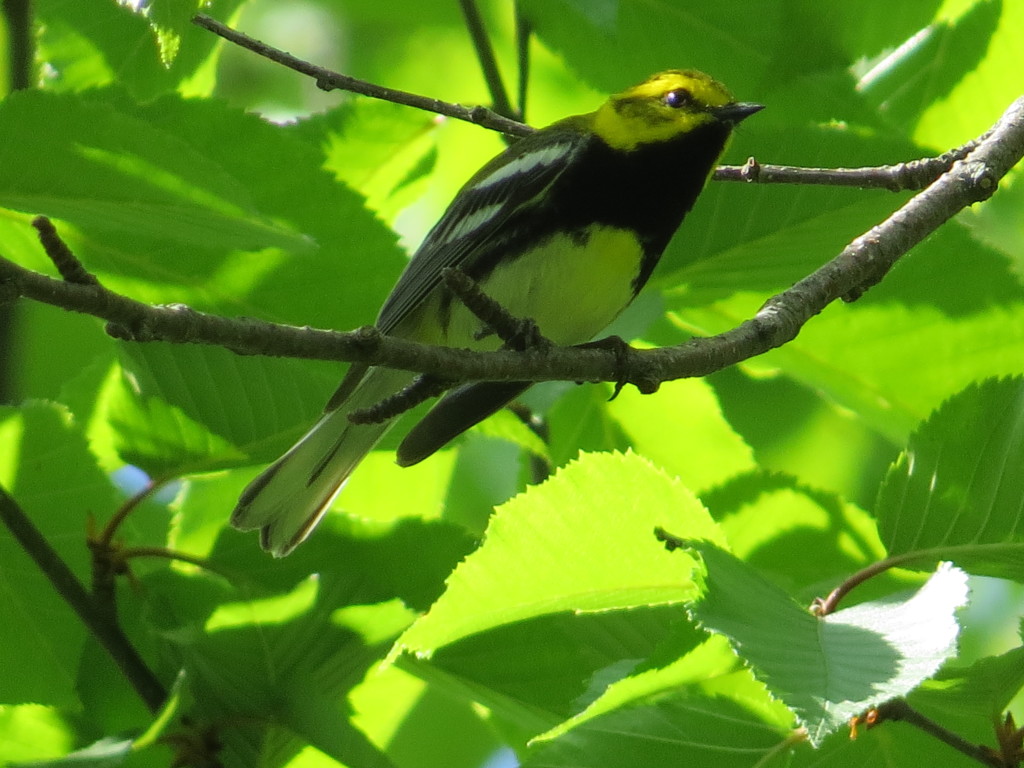 Not only did the Madeline Island Black-throated Greens have a preference for the lesser song, but they also preferred the lesser light, always perching underneath the leaves’ shade and casting them in weird, greenish light.
Not only did the Madeline Island Black-throated Greens have a preference for the lesser song, but they also preferred the lesser light, always perching underneath the leaves’ shade and casting them in weird, greenish light. 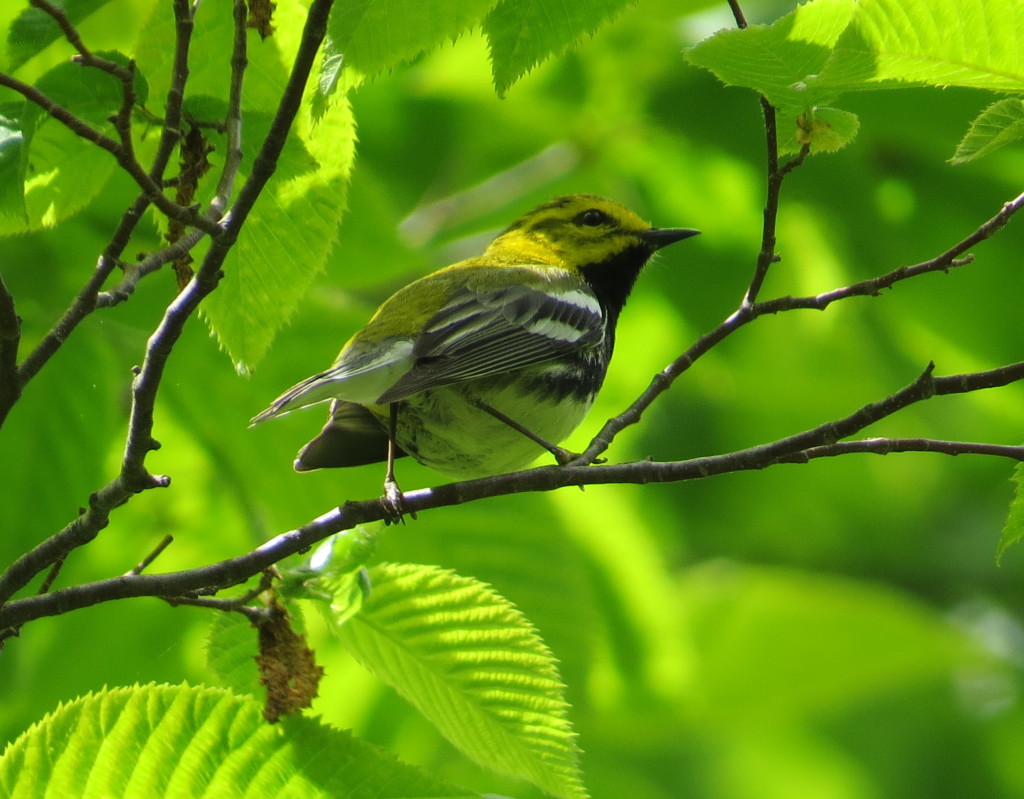 Black-bearded Green Warbler would probably be a more appropriate and much cooler name.
Black-bearded Green Warbler would probably be a more appropriate and much cooler name.
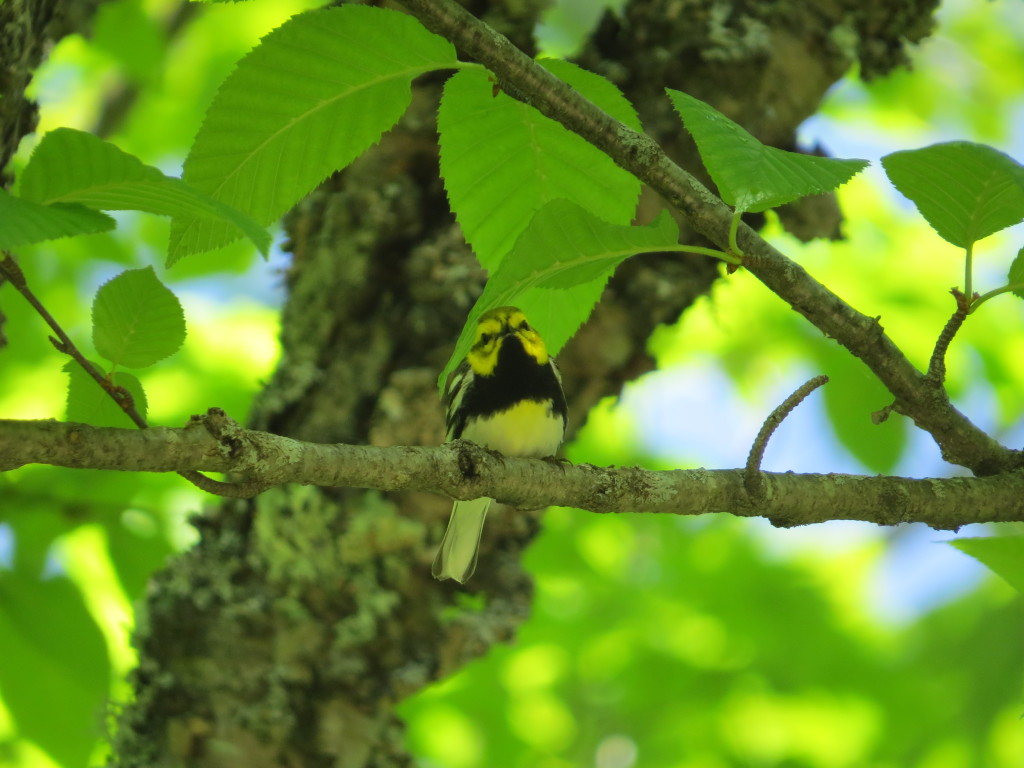
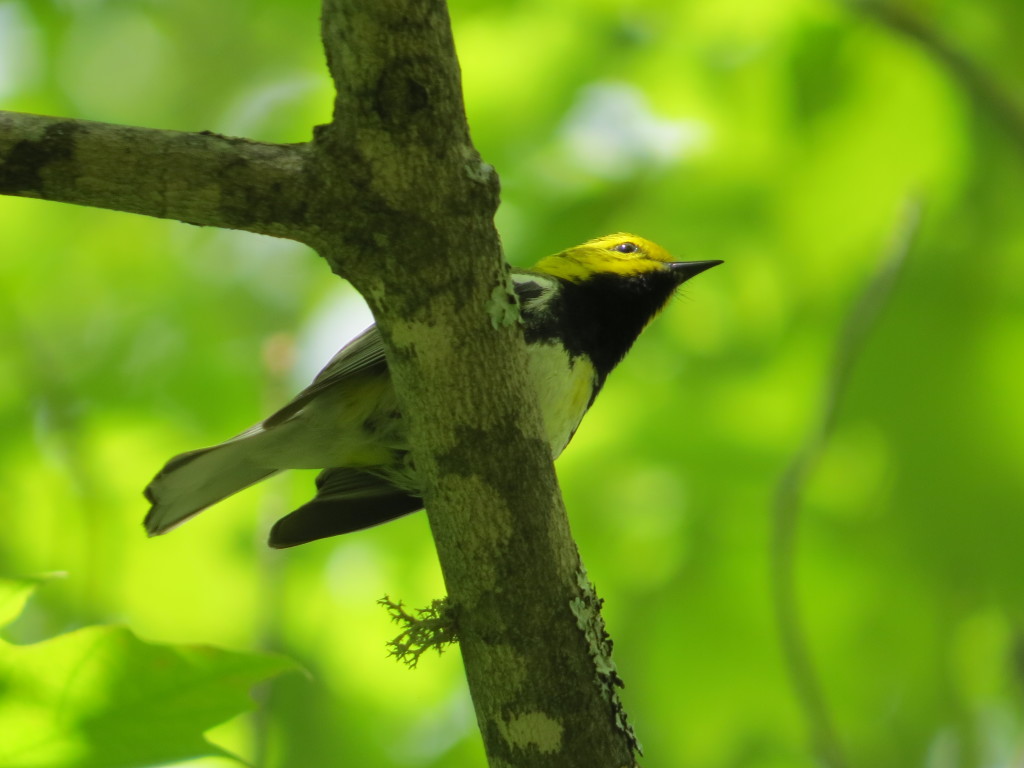 The Black-throated Greens were nice, but they really just whet my appetite for a much, much better Warbler with a black throat. Because of its stunning beauty and scarcity, the Black-throated Blue Warbler was one that I was yearning to see again since my initial viewing in 2013. It was one of my two main birding goals for the trip with the other being the Piping Plovers. I tried real hard to find one on the under-birded Madeline Island. Area birder Nick Anich had described the very particular habitat choice this species likes: mature Maple forests with a high canopy, a fairly open midstory, and a thick understory full of saplings. I’m not sure what it is they like about the Maples, but that is the same type of habitat where the Black-throated Blues are found on Oberg Mountain in Minnesota. Schoolhouse Road on Madeline Island seemed the best I could find to match this habitat description, but I just couldn’t pick out a zoo-zoo-zoo-zoo-zee from the zee-zee-zee-zoo-zees or the zoo-zee-zoo-zoo-zees of the Black-throated Greens.
The Black-throated Greens were nice, but they really just whet my appetite for a much, much better Warbler with a black throat. Because of its stunning beauty and scarcity, the Black-throated Blue Warbler was one that I was yearning to see again since my initial viewing in 2013. It was one of my two main birding goals for the trip with the other being the Piping Plovers. I tried real hard to find one on the under-birded Madeline Island. Area birder Nick Anich had described the very particular habitat choice this species likes: mature Maple forests with a high canopy, a fairly open midstory, and a thick understory full of saplings. I’m not sure what it is they like about the Maples, but that is the same type of habitat where the Black-throated Blues are found on Oberg Mountain in Minnesota. Schoolhouse Road on Madeline Island seemed the best I could find to match this habitat description, but I just couldn’t pick out a zoo-zoo-zoo-zoo-zee from the zee-zee-zee-zoo-zees or the zoo-zee-zoo-zoo-zees of the Black-throated Greens.
The search for the Black-throated Blues would have to take place on the mainland after our trip. Nick Anich and Ryan Brady had given me some places to try. Like in Minnesota, this bird is far from an easy find. Though I had a few options for trying for them, I put all my money (or my family’s time, rather) on one bet: Jammer Hill Road west of Bayfield a few miles. As I drove down the gravel road, it suddenly made a turn for the worse–there was a section of very large, jagged gravel. I’m not exaggerating when I say the rocks were about the size of my fists. No way was I going to pop a tire looking for a bird, so I decided to give up on the Black-throated Blue search and turn around. The problem was there was no place to turn around, so I had to keep inching forward. Turns out this jagged gravel section ended shortly afterward and we were back on smooth, packed gravel again. And a minute later: zoo-zoo-zoo-zoo-zee!
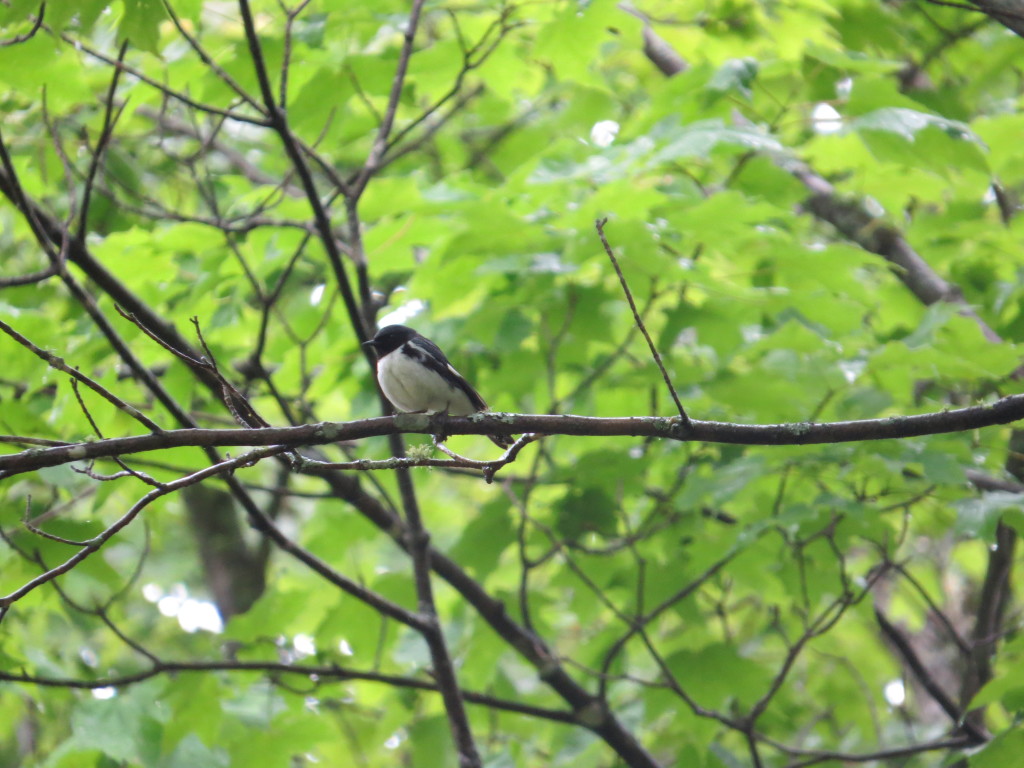 Just as presidential hopefuls are emerging left and right declaring their intentions, I, too, am now making a bold announcement: the Black-throated Blue Warbler is my favorite Warbler. Though I was hooked by the Chestnut-sided, though I’ve stood in awe of the Blackburnian, and though I’ve been dazzled by Painted Redstarts at my feet, the Black-throated Blue is simply the best in my book. I have yet to see the Red-faced, but I don’t even think that beauty could change my mind. My wardrobe is disproportionately blue after all.
Just as presidential hopefuls are emerging left and right declaring their intentions, I, too, am now making a bold announcement: the Black-throated Blue Warbler is my favorite Warbler. Though I was hooked by the Chestnut-sided, though I’ve stood in awe of the Blackburnian, and though I’ve been dazzled by Painted Redstarts at my feet, the Black-throated Blue is simply the best in my book. I have yet to see the Red-faced, but I don’t even think that beauty could change my mind. My wardrobe is disproportionately blue after all.
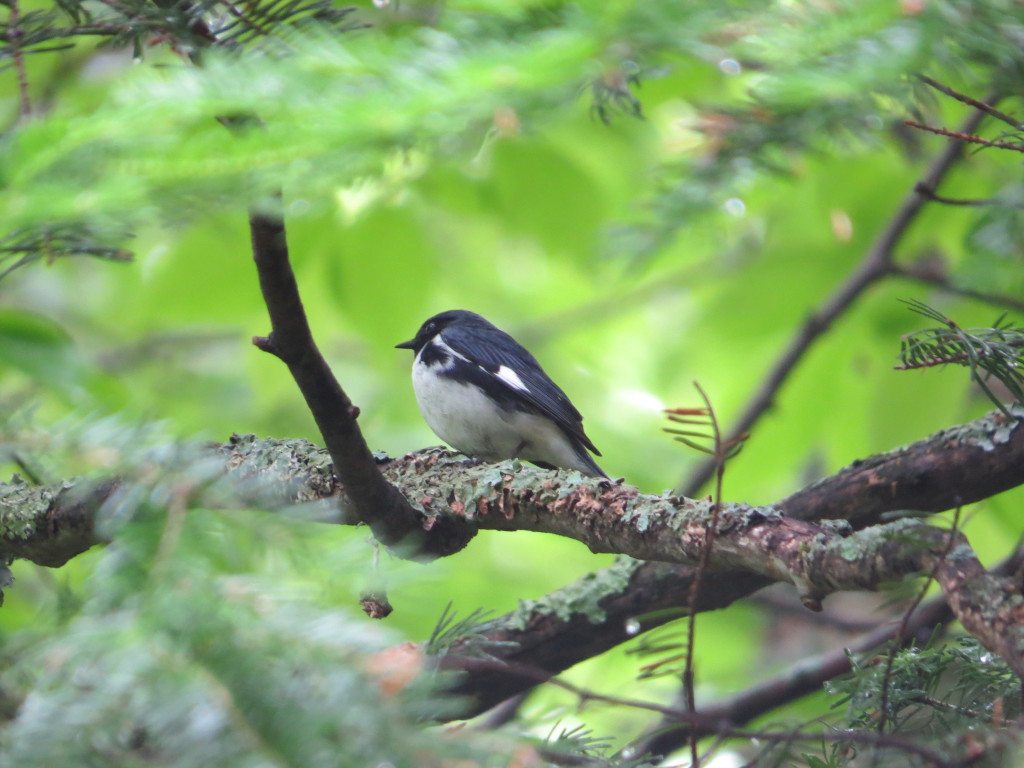
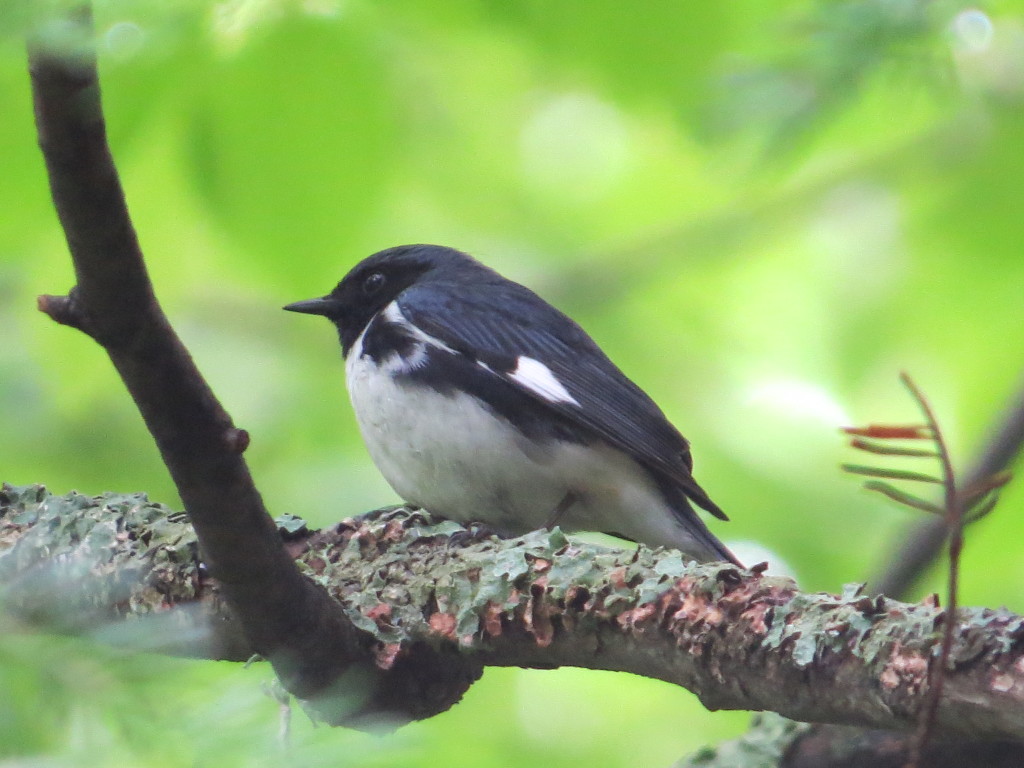
So with that major target achieved, this should be the end of this post. This is how I wanted to end this post. But the Warblering went on. I’m not talking about lame Tennessees and Nashvilles either; I’m talking about some really good stuff. On our way home it worked out rather conveniently that we had a non-birding errand to run in St. Louis Park, a Minneapolis suburb. It was convenient because while on vacation on MI, a birder had found a Hooded Warbler on territory at Westwood Hills Nature Center in St. Louis Park.
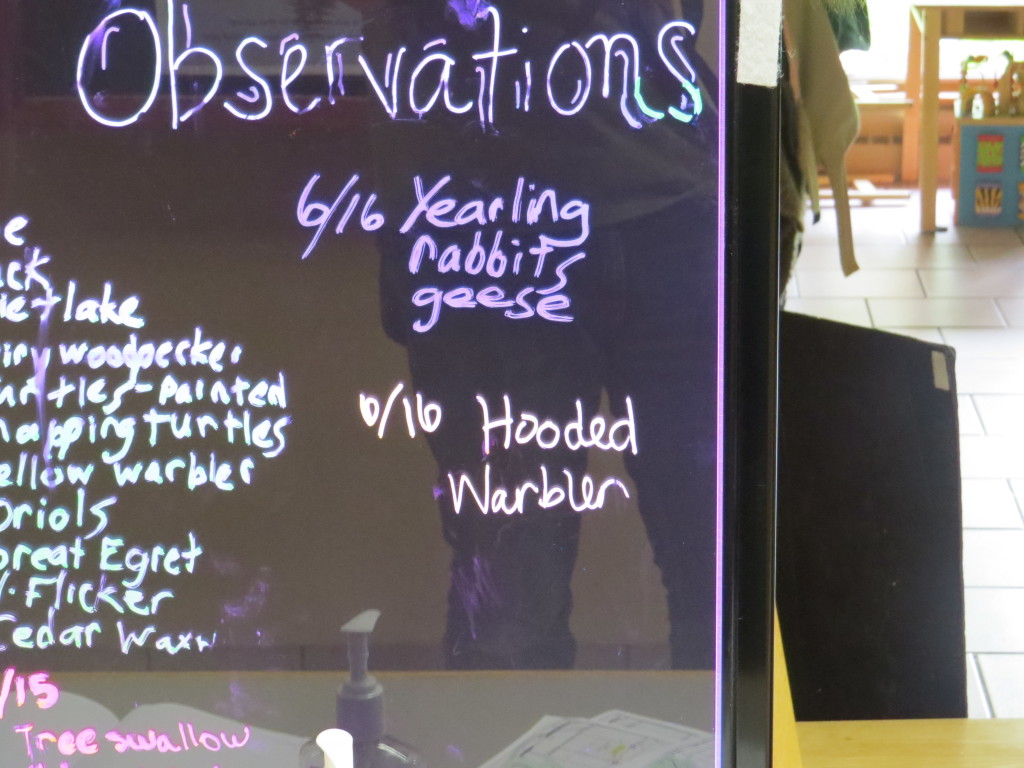
Hooded Warblers nest in small numbers in the south metro at such strongholds as Murphy-Hanrehan Park and Lebanon Hills. It seems, though, that more and more have been popping up this year in new locations, Westwood Hills being one of those. Evan and I hiked the trails at Westwood Hills to see the HOWA while Melissa and Marin waited in the car. We both heard it real well, and I even had some quick fly-by views. Overall though, it was just a bugger for showing itself. Even still, Evan decided that hearing it was good enough to add it to his life list. For me it was a nice addition to the year list.
The HOWA wasn’t the only non-MI Warbler causing angst while I was away. Wifi on an island is a double-edged sword providing birding help while on vacation but also creating birding anxiety back home. Joel Schmidt had notified me that a Blue-winged Warbler was reported at Sibley State Park. He had then tracked down the info from the original finder and saw the bird himself. We are at the very fringes of the Blue-winged Warblers’ range. In other words, it is a very good bird for Kandiyohi County that was not yet on my county list. At dawn that very morning after we got home from vacation, I zipped out to Sibley. Warblers on territory–so fun, so incredibly reliable. Getting the 3/3 experience at home with a great Warbler was a fitting way to cap off a great trip full of Warblering in the northwoods.
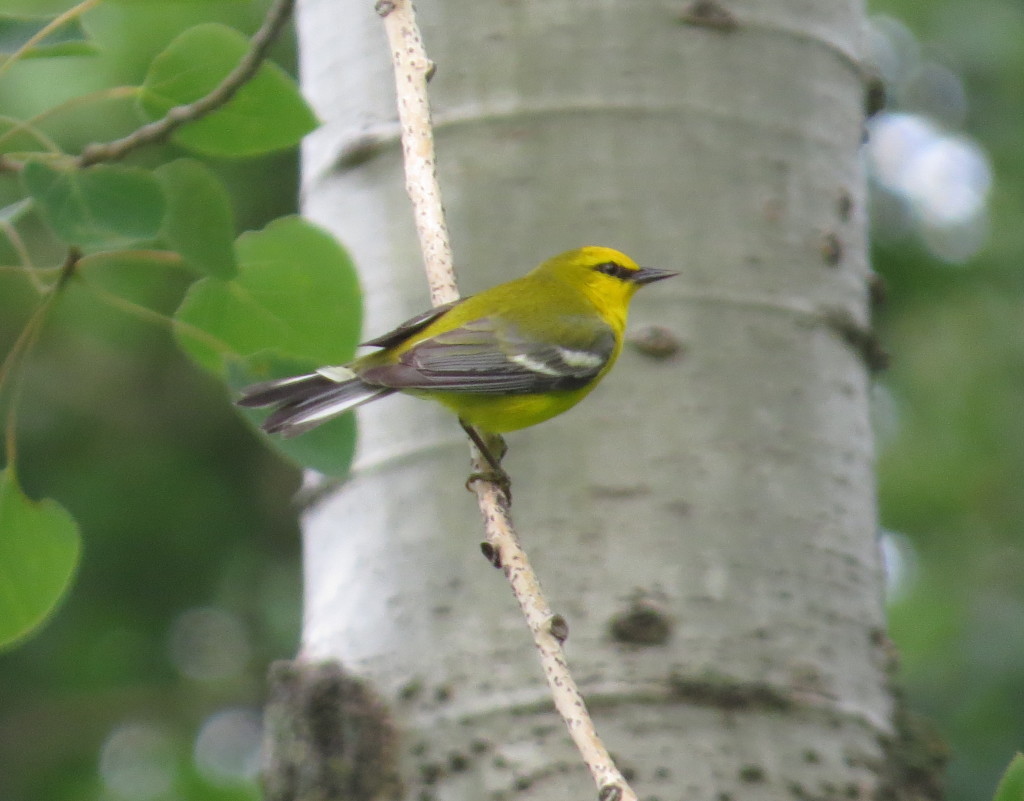
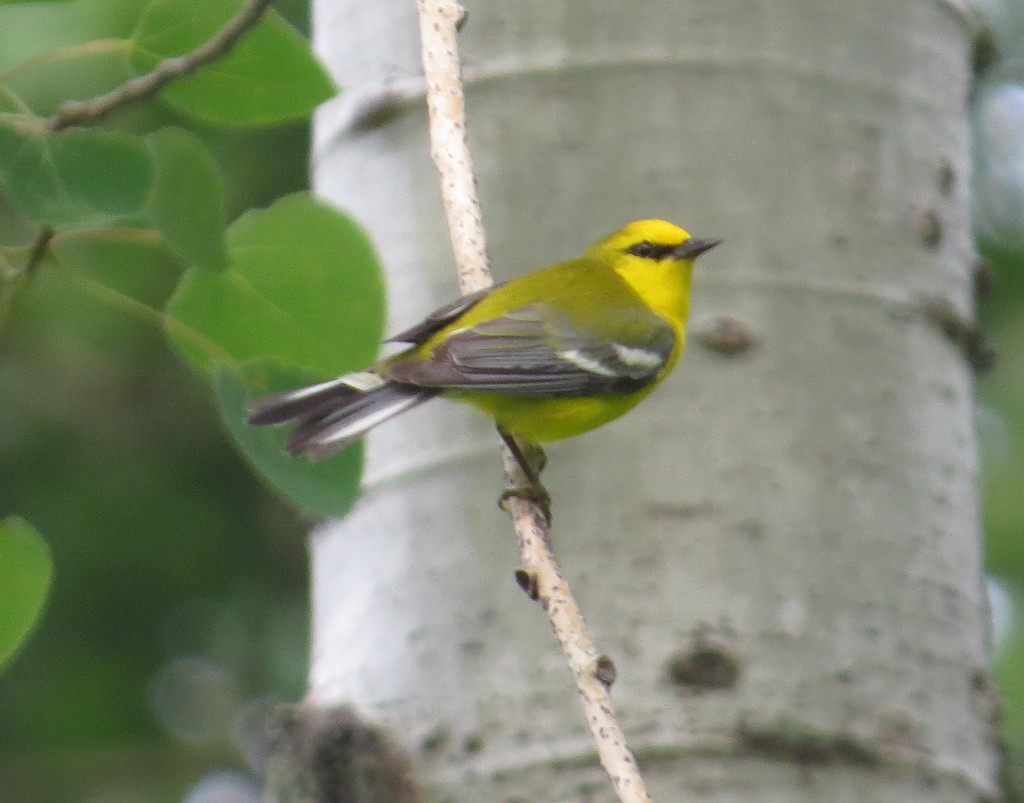 There are more Warblers on the horizon as I have since made two post-MI trips to northern MN with a third one coming this weekend. But first, what could make a Woodpecker chase so compelling?
There are more Warblers on the horizon as I have since made two post-MI trips to northern MN with a third one coming this weekend. But first, what could make a Woodpecker chase so compelling?

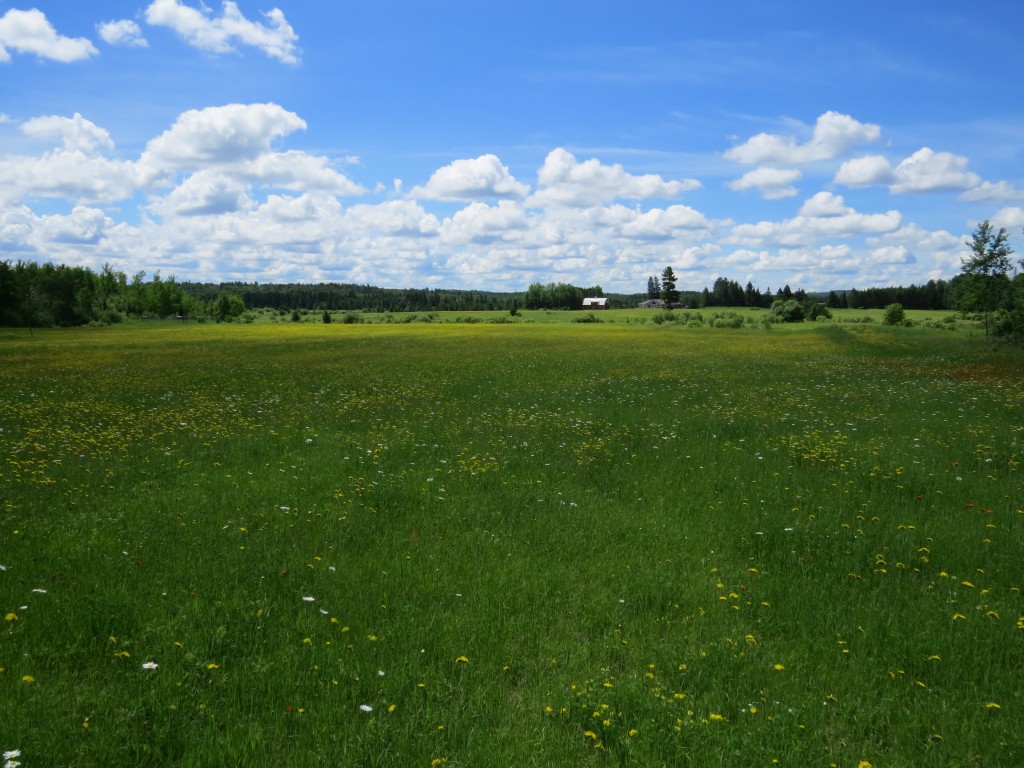
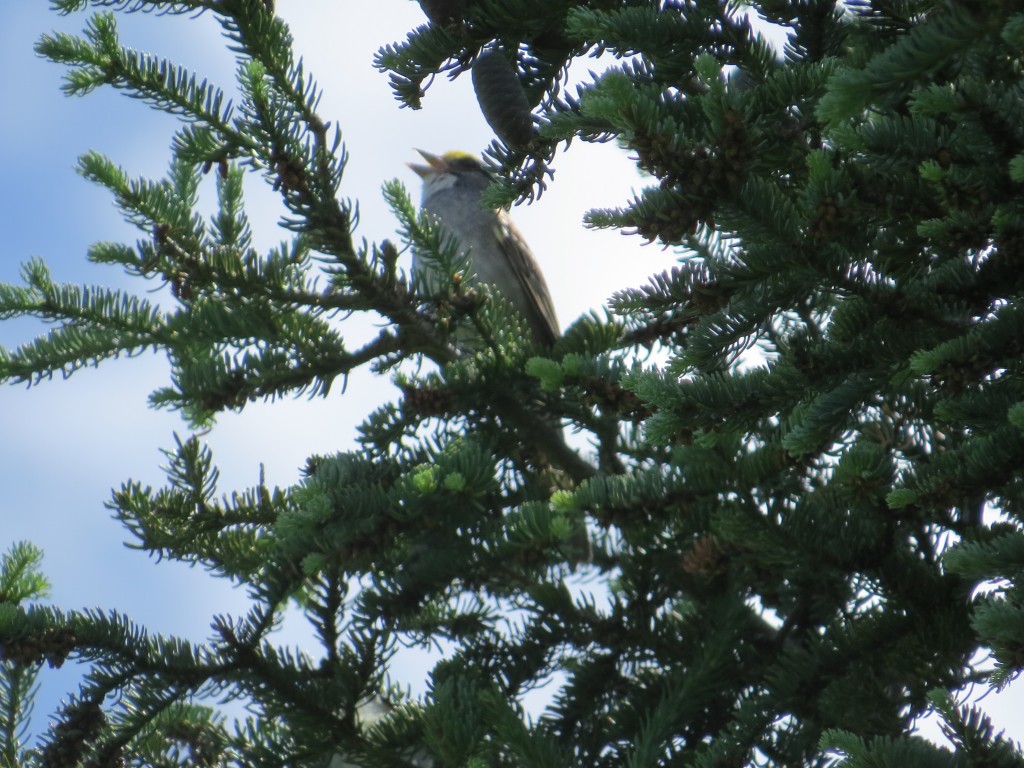
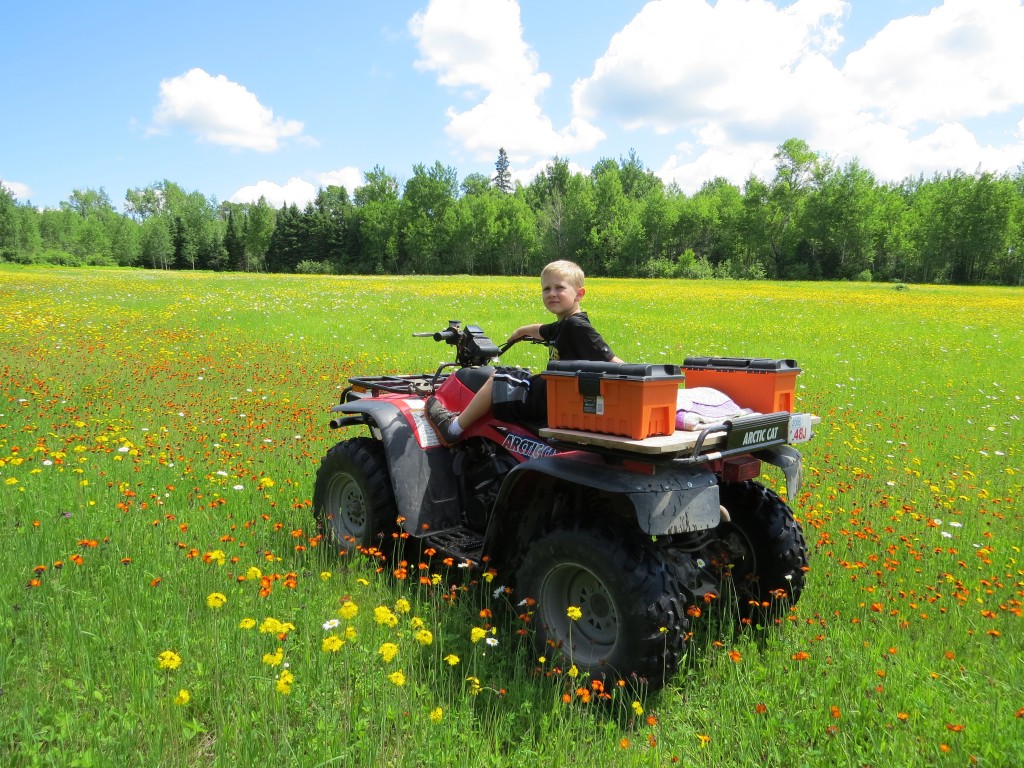
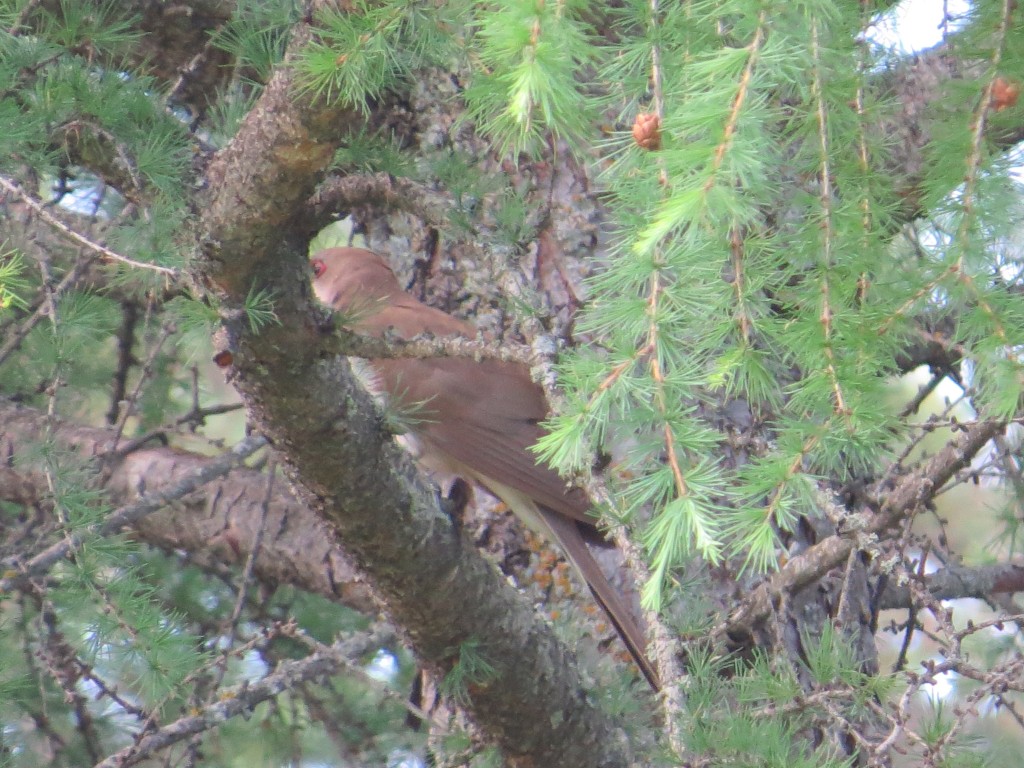
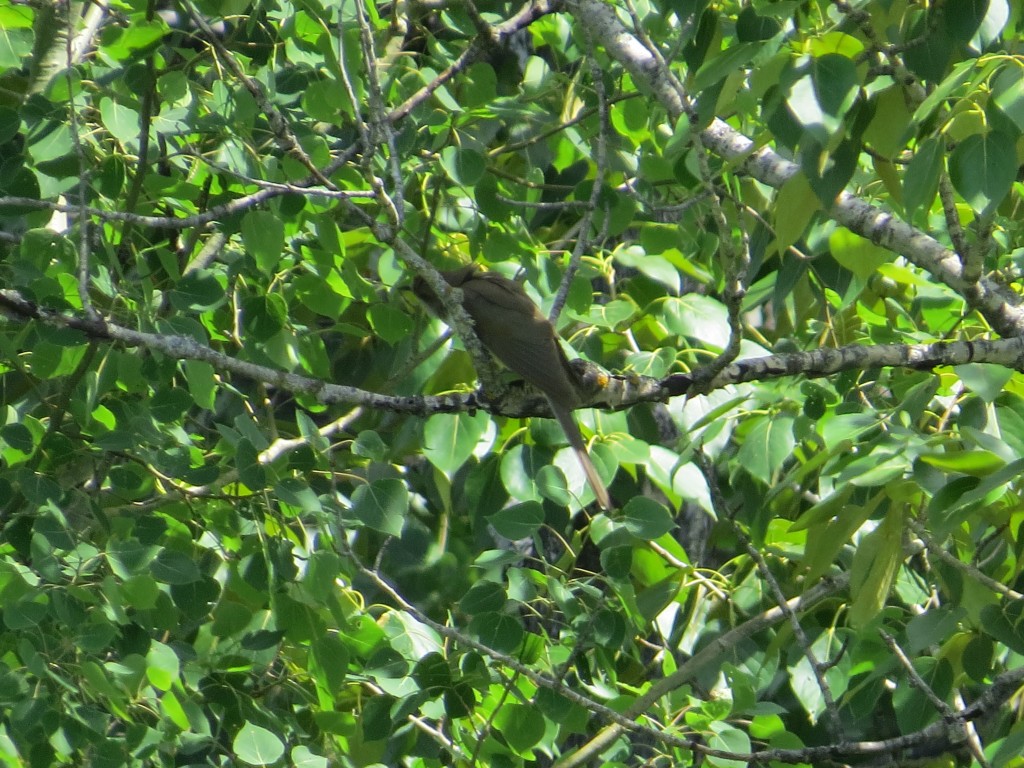
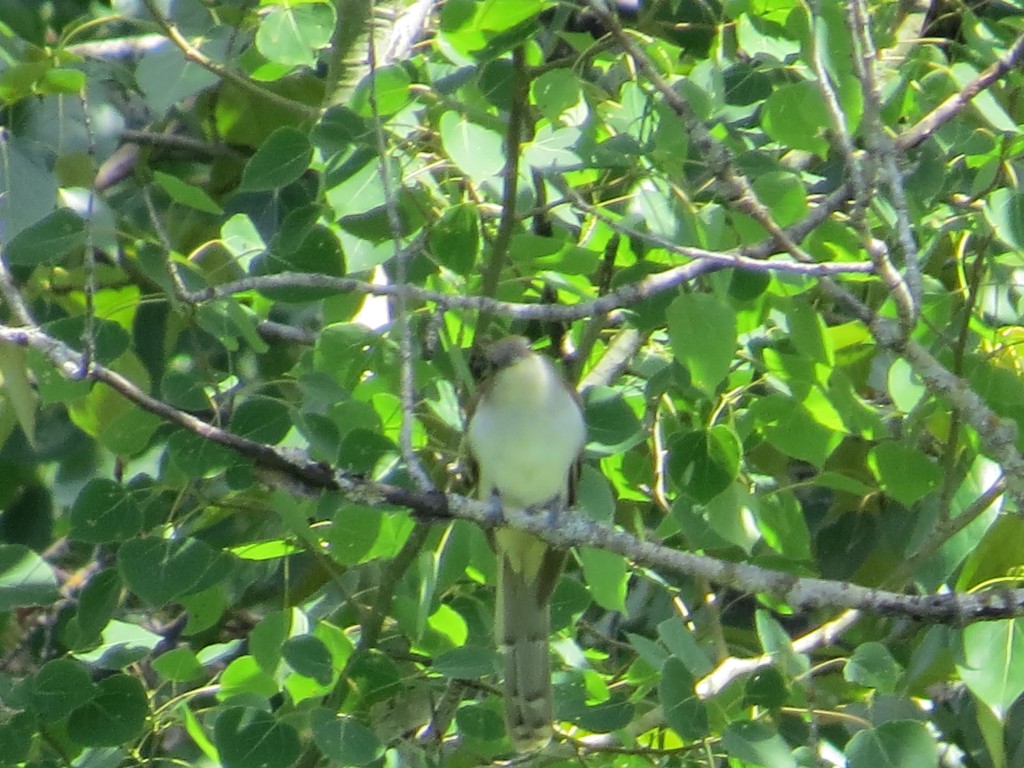
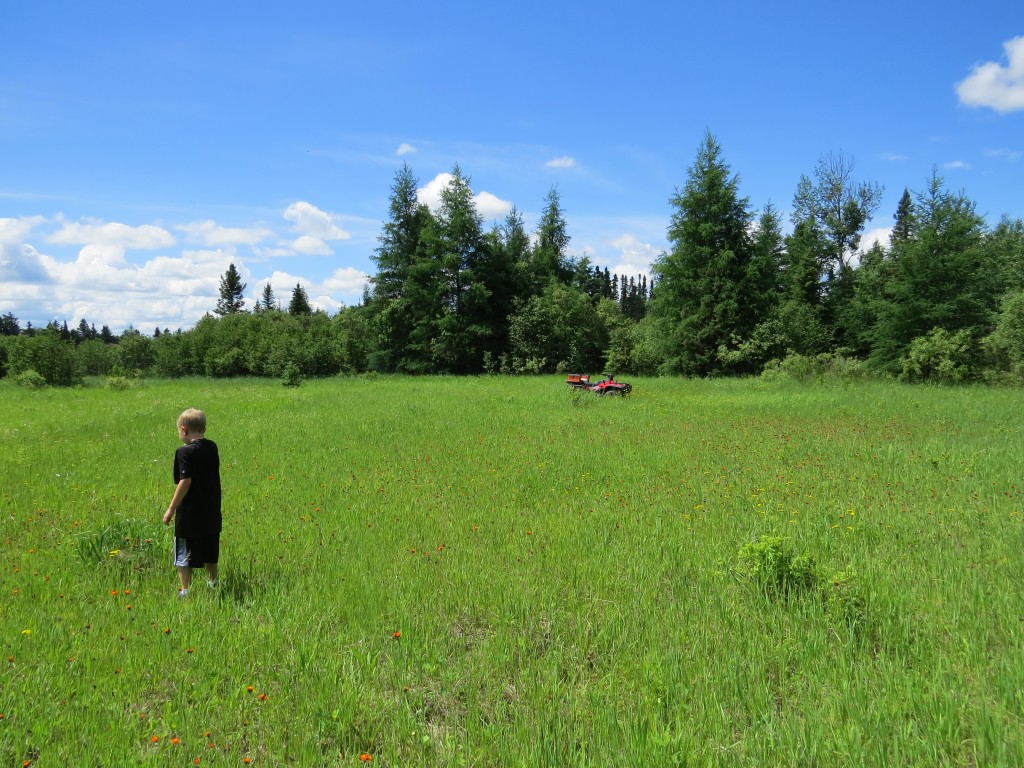 A good sighting like that made a beautiful day even more beautiful.
A good sighting like that made a beautiful day even more beautiful.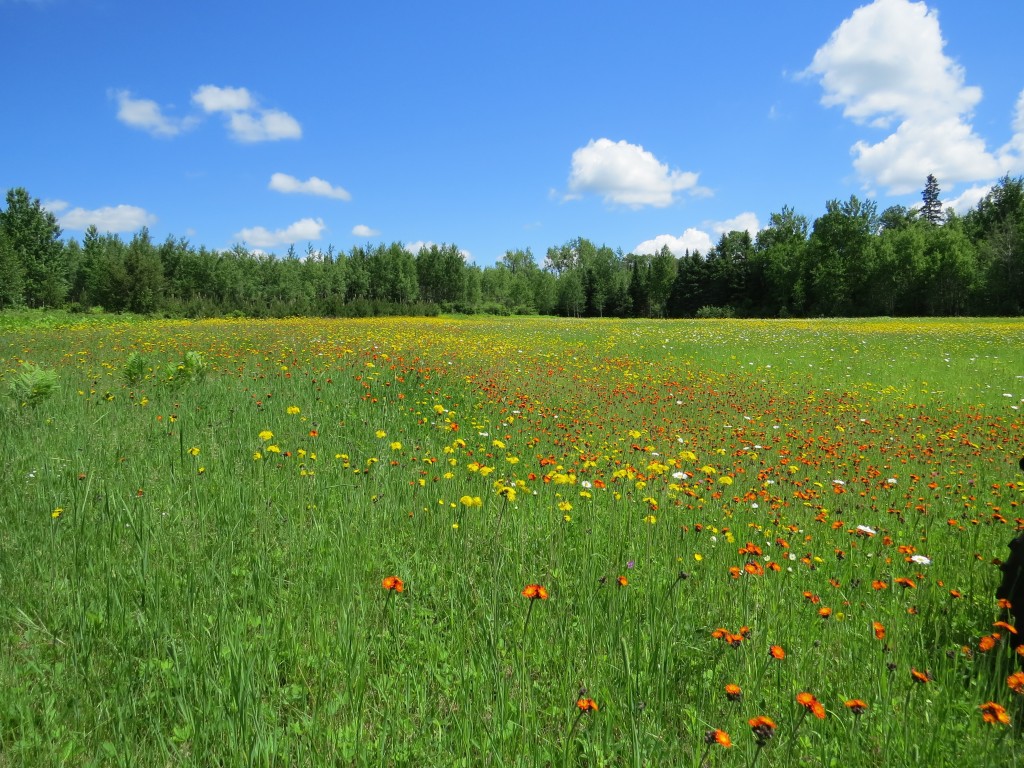
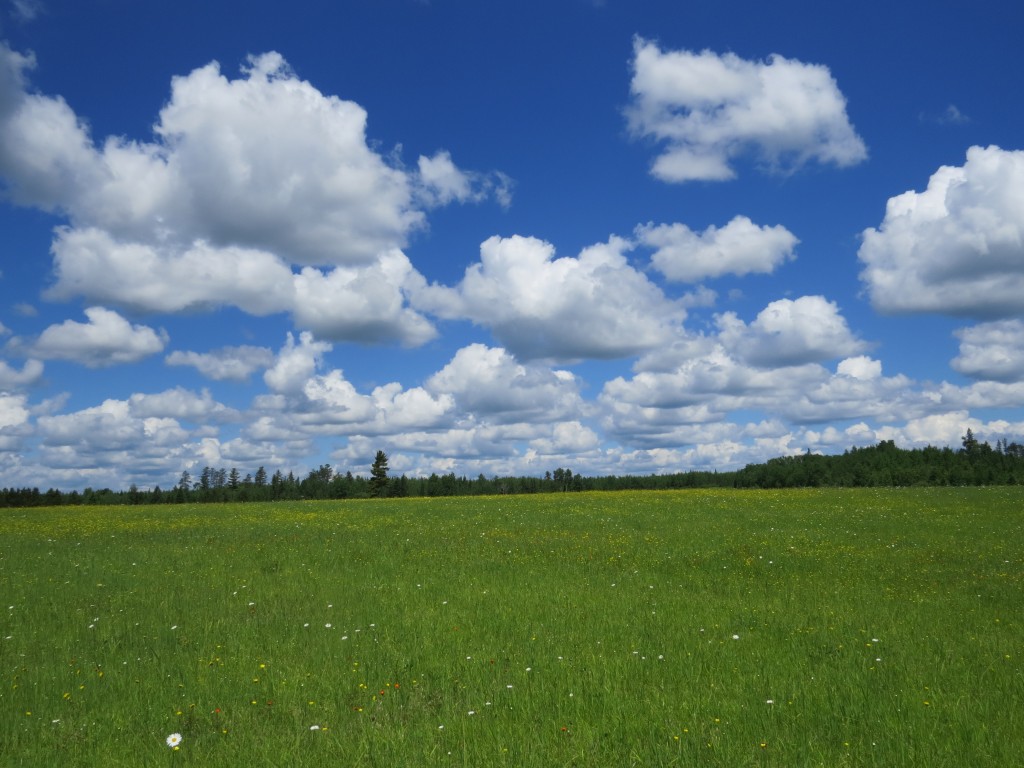
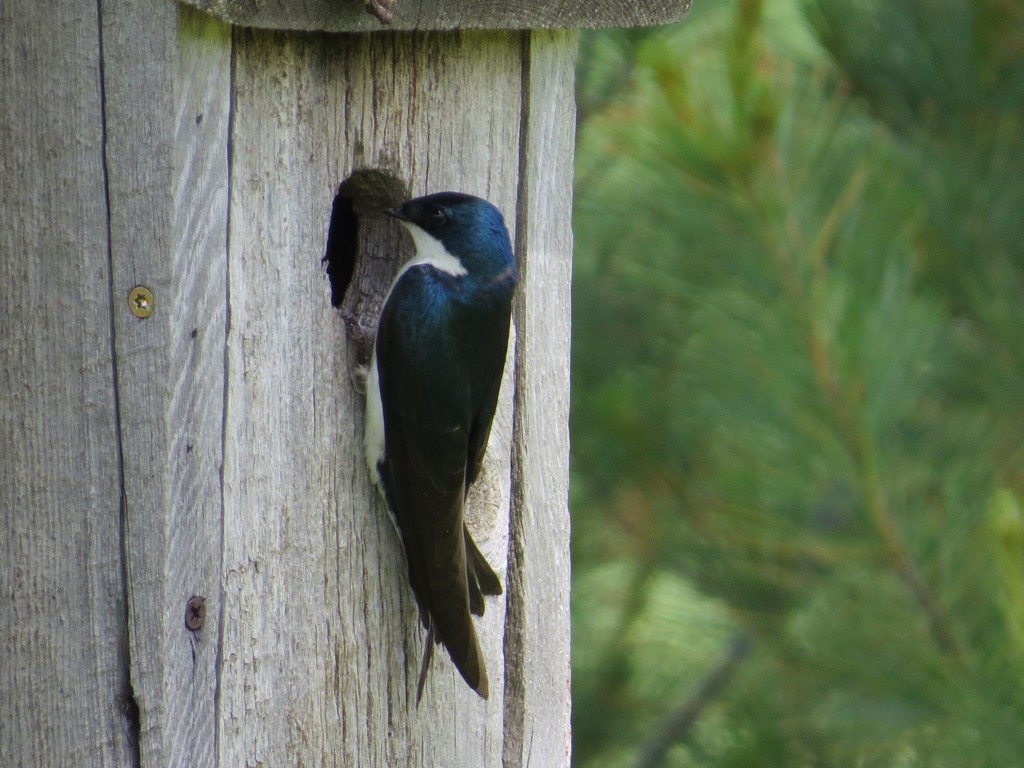
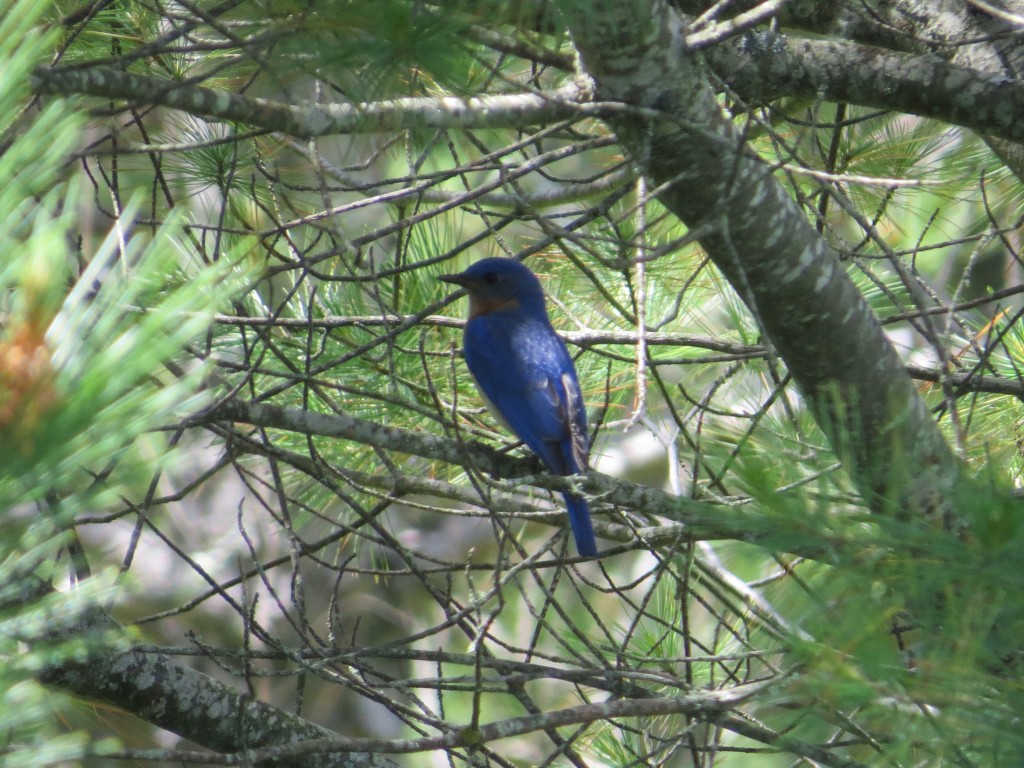
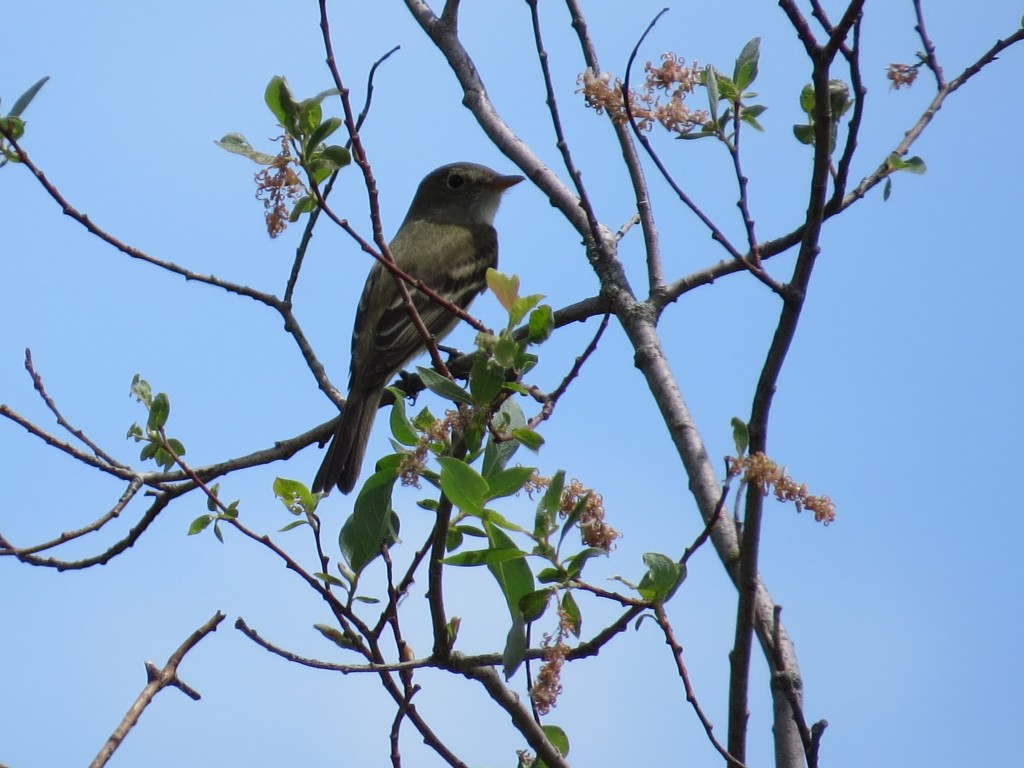
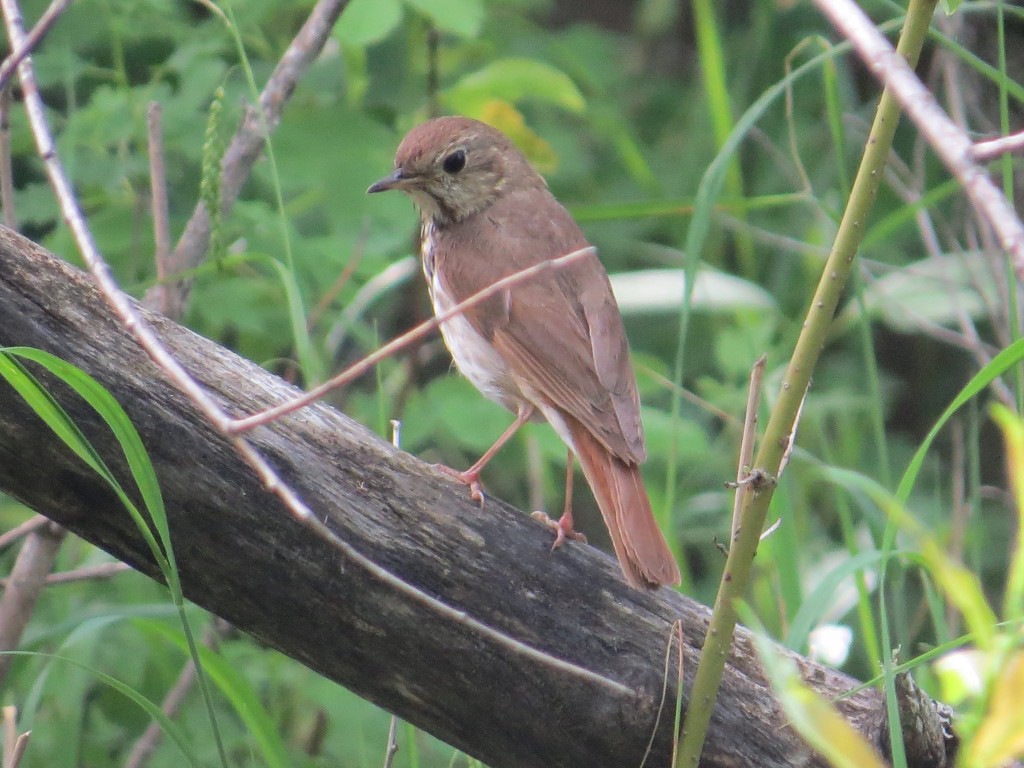
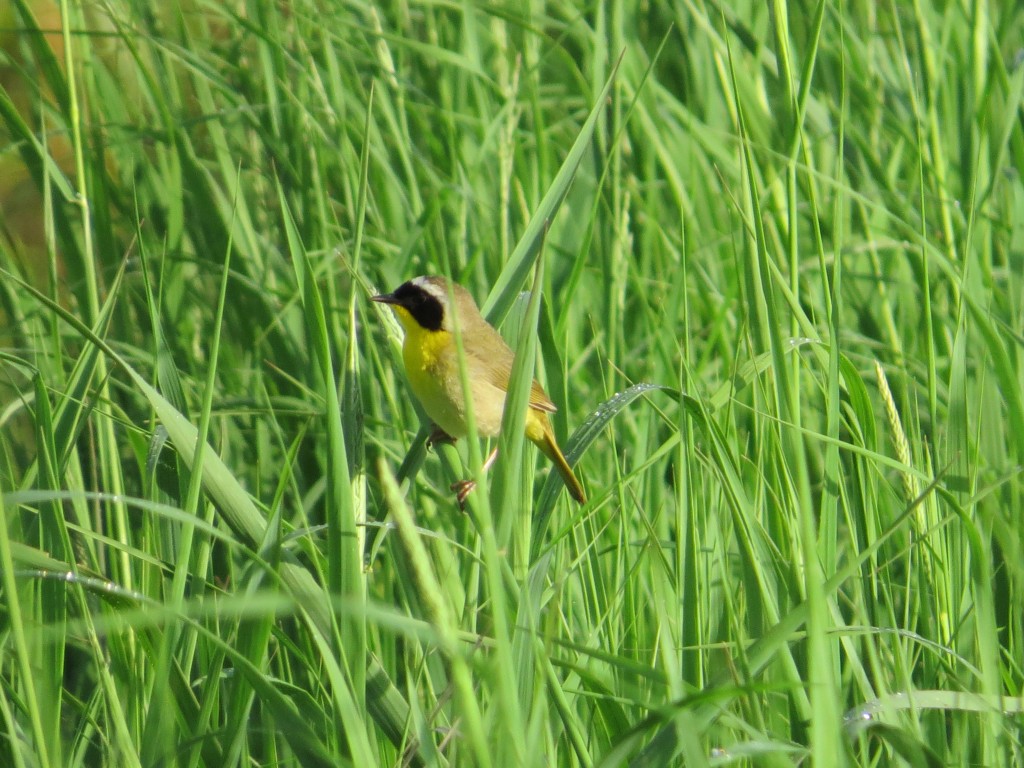
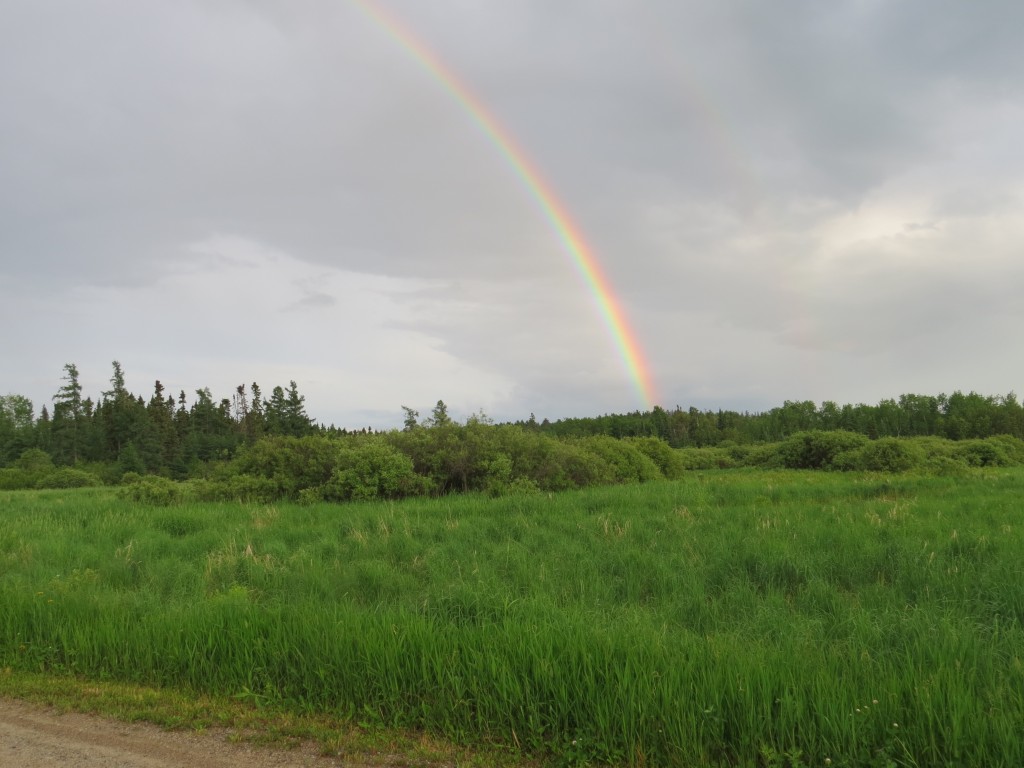 Not bad birding around the parents’ farm. I also sneaked away one morning on a quick solo mission to hike the Vermilion Gorge trail by Crane Lake on a tip from local birder, Dee Kuder, to look for Pine Warblers. Pine Warbler is a hole in my warbler life list, and I always forget about this drab warbler during migration and when I’m up north. It’s like that quiet kid in the classroom – always there but greatly overshadowed by the more gaudy and boisterous warbler children. Today was the day to look for the Pine. Evan declined my offer to go on this hike.
Not bad birding around the parents’ farm. I also sneaked away one morning on a quick solo mission to hike the Vermilion Gorge trail by Crane Lake on a tip from local birder, Dee Kuder, to look for Pine Warblers. Pine Warbler is a hole in my warbler life list, and I always forget about this drab warbler during migration and when I’m up north. It’s like that quiet kid in the classroom – always there but greatly overshadowed by the more gaudy and boisterous warbler children. Today was the day to look for the Pine. Evan declined my offer to go on this hike.